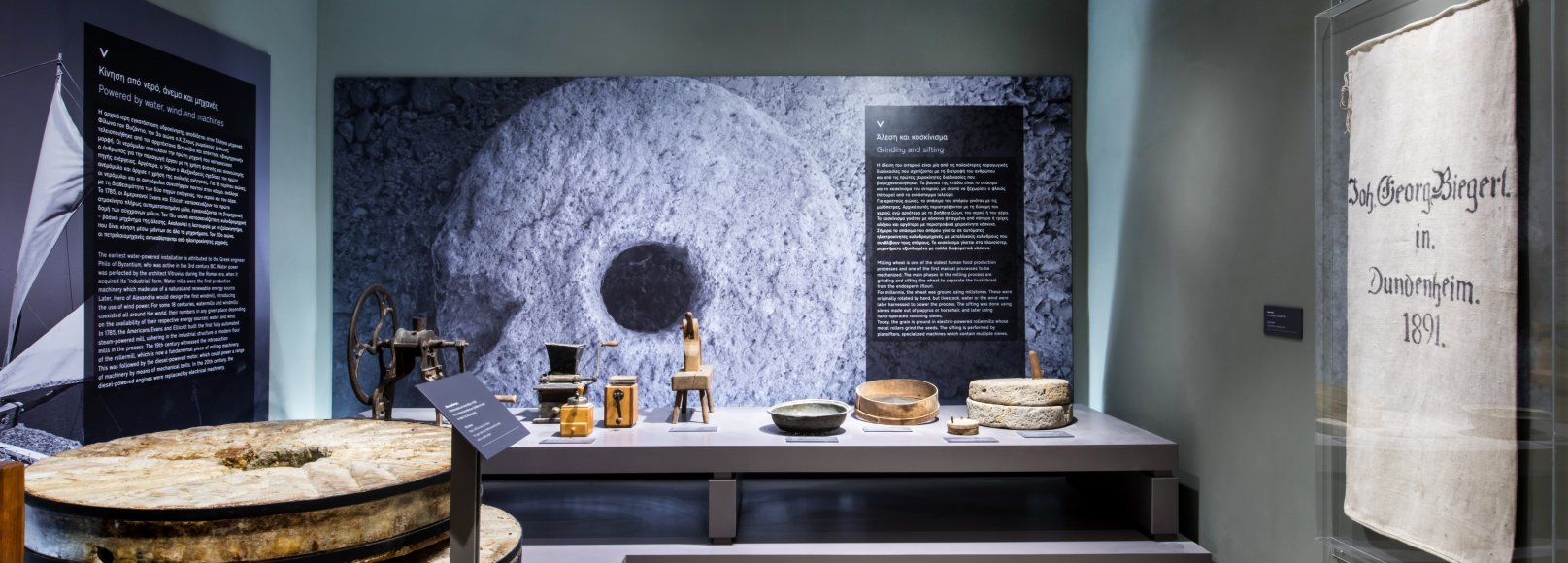Grinding and sifting
For millennia, the wheat was ground using millstones. These were originally rotated by hand, but livestock, water or the wind were later harnessed to power the process. The sifting was done using sieves made out of papyrus or horsehair, and later using hand-operated revolving sieves. Today, the grain is ground in electric-powered rollermills whose metal cyclinders pulverize the seeds. The sifting is performed by plansifters, specialized machines which contain multiple sieves.
Powered by water, wind and machines
The earliest water-powered installation is attributed to the Greek engineer Philo of Byzantium, who was active in the 3rd century BC. Water power was perfected by the architect Vitruvius during the Roman era, when it acquired its "industrial" form. Water mills were the first production machinery which made use of a natural and renewable energy source. Later, Hero of Alexandria would design the first windmill, introducing the use of wind power. For some 18 centuries, watermills and windmills coexisted all around the world, their numbers in any given place depending on the availability of their respective energy sources: water and wind.
In 1785, the Americans Evans and Ellicott built the first fully automated steam-powered mill, ushering in the industrial structure of modern flour mills in the process. The 19th century witnessed the introduction of the rollermill, which is now a fundamental piece of milling machinery. This was followed by the diesel-powered motor, which could power a range of machinery by means of mechanical belts. In the 20th century, the diesel-powered engines were replaced by electrical machinery.
The modern flour mill
When the wheat arrives at the mill, it is sent to be cleaned and have bad seeds and other impurities removed. Sortex optical sorting machines now achieve excellent results, guaranteeing both the purity and the hygiene of the grain. Grinding is a complex multi-stage process involving various machines, with the flour being transferred from one to the other by pneumatic conveyors. The next step is homogenization, in which different batches of flour are mixed until they have the same qualitative characteristics. The homogenized flour is then stored in silos. From the silo, the flour is taken to the automatic mixing system, where the final flours are prepared in accordance with recipes developed by the Research and Development Department. Finally, the product is packaged in sacks or packets or loaded onto vehicles equipped with silos.The process is monitored at every stage by the Quality Control Department.

